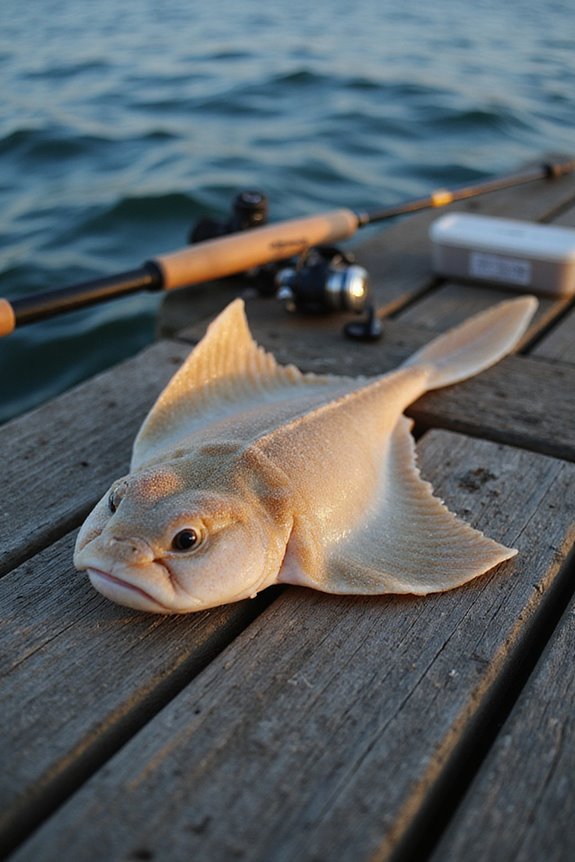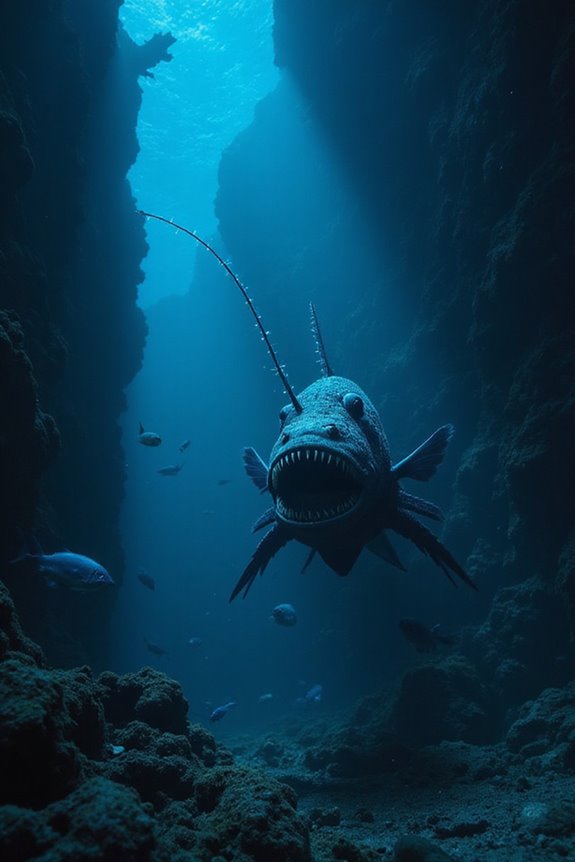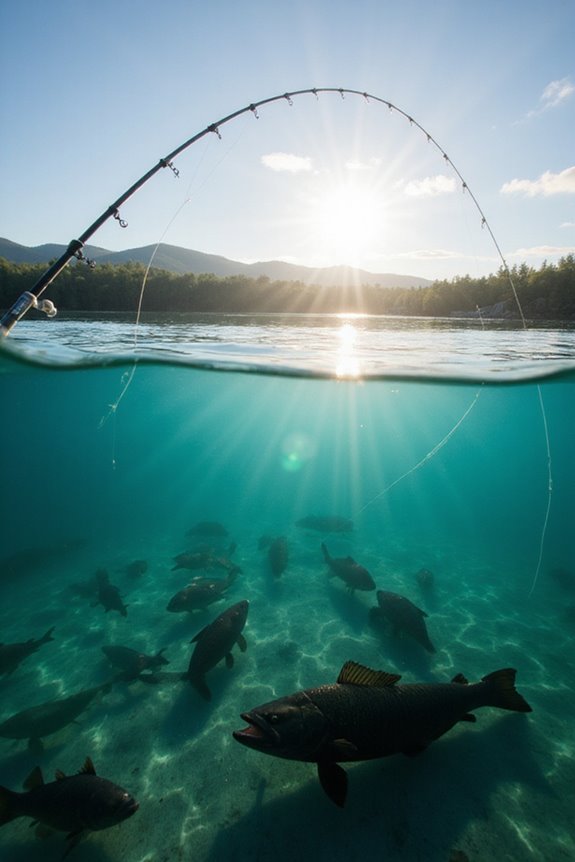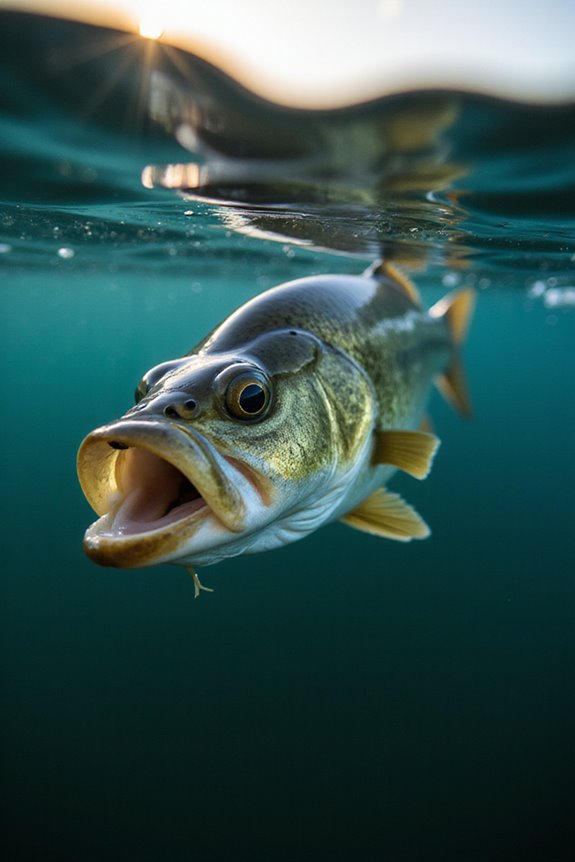Skate wing fish, part of the family Rajidae, are flat-bodied fish with wing-like pectoral fins. They thrive in cold, temperate waters and prefer sandy, muddy, or rocky bottoms. To catch them, use a bottom rig with fresh bait like shrimp or squid, especially during early mornings or late evenings. Skates reproduce annually by laying leathery egg cases called mermaid’s purses. Their role in benthic ecosystems is essential for maintaining balanced marine life, and you’ll find more fascinating details ahead.
Key Takeaways
- Skate wing fish belong to the family Rajidae, characterized by their diamond-shaped bodies and wing-like pectoral fins.
- They inhabit cold, temperate to polar waters and prefer sandy, muddy, or rocky bottoms at various depths.
- Skates reproduce annually, with females laying hard, leathery egg cases known as mermaid’s purses.
- They play a crucial ecological role in benthic ecosystems, regulating populations of crustaceans and small fish.
- Skates are also an important food source for sharks, marine mammals, and seabirds, contributing to marine biodiversity.
Definition and Classification of Skate Wing Fish
Skate wing fish, commonly referred to simply as skates, are fascinating creatures belonging to the family Rajidae within the order Rajiformes. This taxonomy overview reveals that skates are part of the superorder Batoidea, which includes rays and other related species. Over 150 skate species are scientifically described, grouped into about 17 genera in Rajidae. These elasmobranchs, distinguished by their cartilaginous skeletons, have unique adaptations for life on the ocean floor, like diamond-shaped pectoral fin discs, often called “wings.” The mottled skate, for instance, is popular for its edible wings and can be found in coastal waters. Anglers targeting skates might benefit from using 3D printed lures with realistic patterns that mimic their natural prey. Knowing the classification helps anglers identify various skate species, enhancing their fishing experience and improving catch strategies.
Physical Characteristics and Anatomy
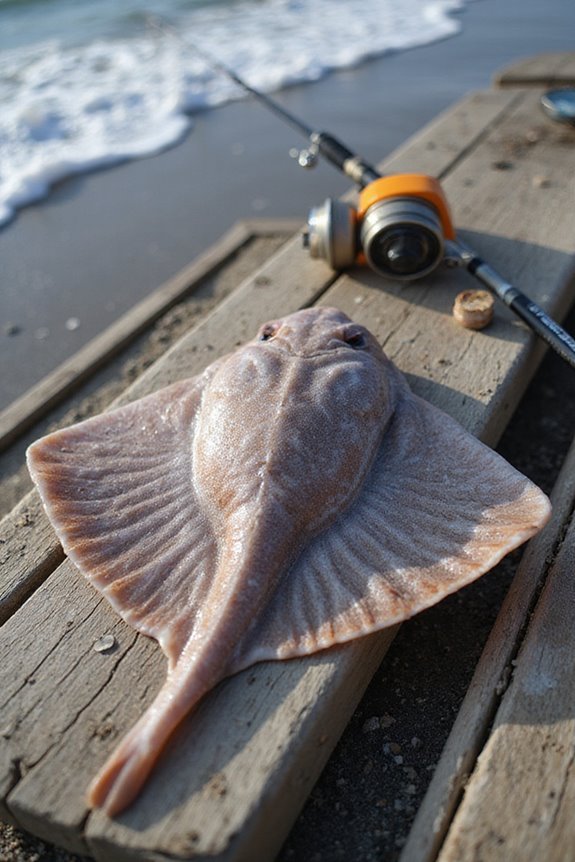
Understanding the physical characteristics and anatomy of skates can greatly enhance your fishing experience. Skates have a distinctive diamond-shaped body and large, wing-like pectoral fins that help them glide through the water. Their rough skin, covered in placoid scales, provides protection and a sandpaper-like texture. Skates possess a cartilaginous skeleton, allowing flexibility in their jaw structure for feeding. Their five gill slits on the ventral side facilitate respiration, and spiracles on top aid breathing while resting on the seafloor. Keen eyesight helps them detect predators, while specialized teeth adapt them for crushing hard-shelled prey. Coloration patterns vary, allowing them to blend in with the substrate, enhancing their camouflage and survival. When targeting skates, using a spinning reel design with smooth drag systems helps manage their unique fighting style as they use their wing-like body to create resistance.
Habitat and Behavior
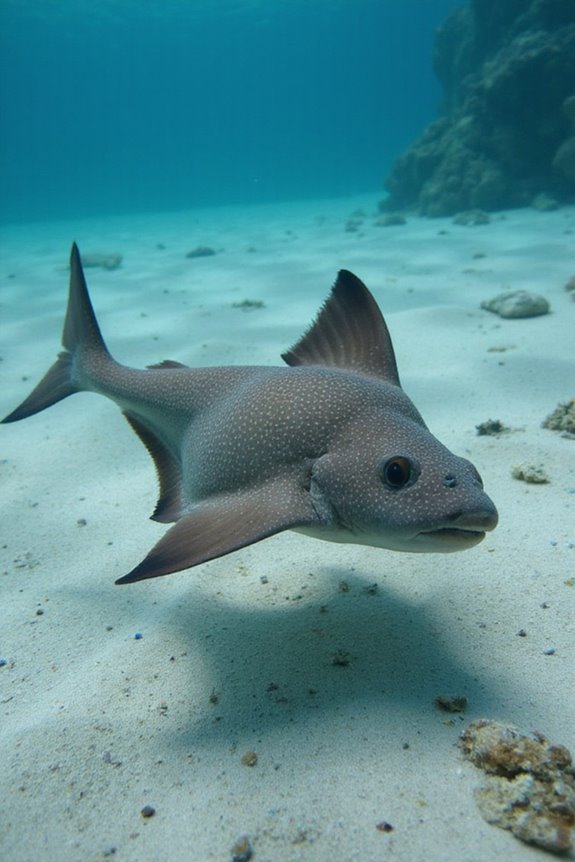
When fishing for skates, it is vital to recognize their diverse habitat and behavior, as these factors directly influence your success on the water. Skates prefer cold, temperate to polar waters, often found on sandy, muddy, or rocky bottoms at depths ranging from 10 to 3,000 meters. When targeting them, focus on continental shelves and upper slopes where they hunt for benthic invertebrates. Their behavioral patterns include being primarily nocturnal, so early morning or late evening trips can yield better results. Use a bottom rig with fresh bait like shrimp or squid, and be prepared for a slow but steady catch. Remember, skates excel at camouflage, so patience is essential while waiting for a bite. Monitoring barometric pressure trends can significantly improve your skate fishing success, as these bottom-dwelling fish are particularly sensitive to atmospheric changes.
Reproduction and Life Cycle
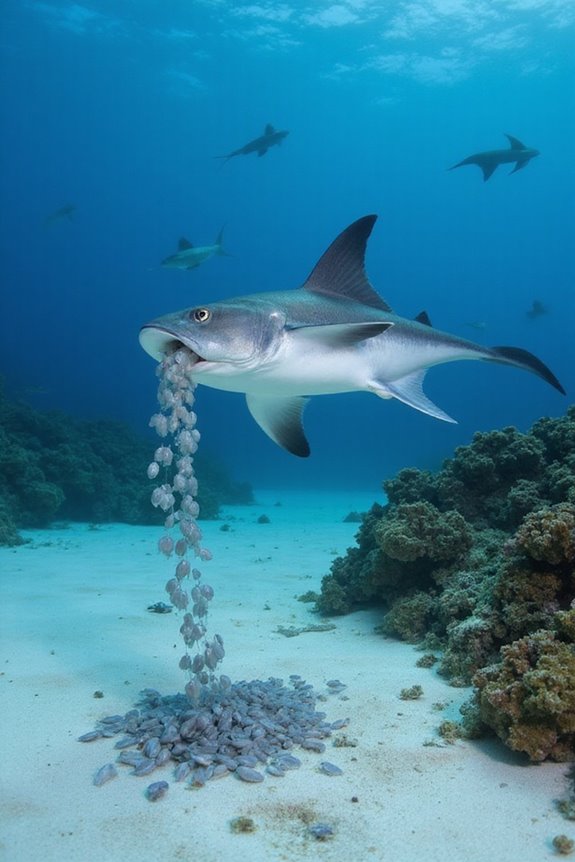
Reproduction in skates occurs annually at established nursery grounds, where males and females engage in mating rituals that enhance fertilization success. Males use their claspers to deliver semen into the female’s cloaca, ensuring internal fertilization. After fertilization, females produce hard, leathery egg cases called mermaid’s purses, which protect developing embryos. Each egg case typically holds one embryo but can contain multiple ones in some species. Egg development can take up to 15 months, depending on environmental factors like water temperature. Newly hatched skates measure between 4 to 6 inches and face a gradual growth period, often taking years to reach maturity. Understanding this life cycle is vital for successful fishing practices and species conservation efforts.
Ecological Role and Importance
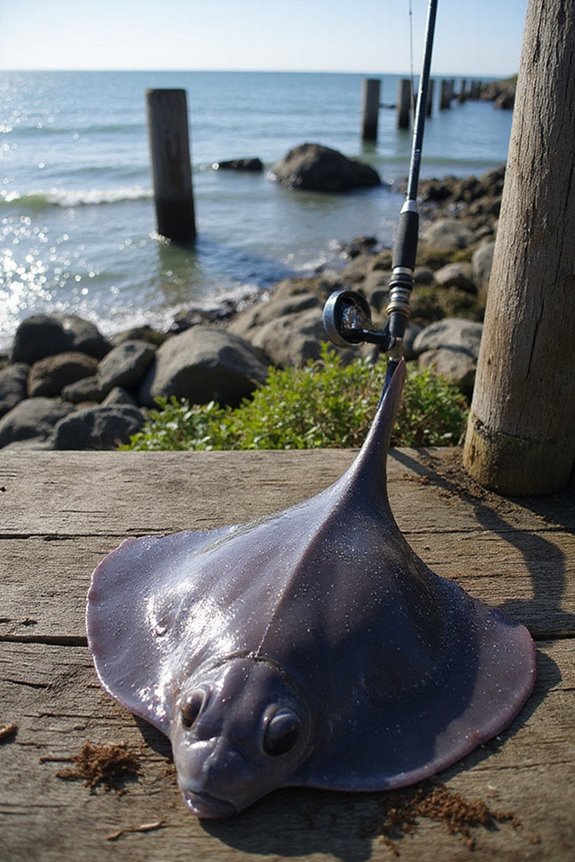
Skate wing fish play an essential role in benthic ecosystems, where they thrive on the seafloor, acting as both predators and prey. Their ecological importance is evident as they consume crustaceans, mollusks, and small bony fish, helping regulate these populations. This feeding behavior influences benthic community structure and supports biodiversity by linking invertebrates to larger marine predators. Skates occupy various ecological niches across different depths, providing food for sharks, marine mammals, and seabirds. Their presence enhances ecosystem resilience, buffering against imbalances in marine food webs. As they grow, their diverse feeding habits contribute to the stability of benthic communities, making them indispensable players in maintaining healthy marine environments.
Distinguishing Features Compared to Similar Species
Understanding the distinguishing features of skate wing fish is essential for anglers looking to identify them in the field. When it comes to skate differences, their dorso-ventrally flattened body and rhomboidal shape set them apart from other rays, which usually have thinner, whip-like tails. Skates feature long, fleshy tails and two dorsal fins, while many rays lack these. In ray comparisons, note that skates lack a venomous tail stinger, making them safer to handle. Their rough skin with placoid scales and paired pelvic fins further distinguish them. When fishing, look for their unique ventral mouth and ambush feeding behavior. Knowing these traits can enhance your fishing experience and guarantee accurate identification on your next outing.
Frequently Asked Questions
What Do Skate Wing Fish Eat in Their Natural Habitat?
Skate wing fish primarily eat crustaceans, reflecting their dietary preferences. Their feeding habits include foraging for amphipods and mollusks, showcasing an opportunistic approach to benthic prey in their natural habitat. Isn’t it fascinating?
Are Skate Wing Fish Endangered or Threatened Species?
I’ve learned that skate populations are at risk, with some species critically endangered. Skate conservation efforts are essential for their survival, especially considering their slow reproduction rates and vulnerability to overfishing impacting their population status.
How Long Do Skate Wing Fish Typically Live?
Skate wing fish typically live between 7 to 100 years, depending on species. Lifespan factors like habitat conditions and reproductive maturity play essential roles, influencing their longevity and vulnerability to environmental changes and overfishing.
What Are Common Predators of Skate Wing Fish?
Skate wing predators include larger fish like sharks and marine mammals such as grey seals. I’ve noticed these predator species often target skates, which use camouflage and burying techniques to evade them. Isn’t nature fascinating?
Can Skate Wing Fish Be Kept in Home Aquariums?
I’ve found that skate wing fish can be kept in home aquariums, but their specific aquarium requirements and suitable tank mates are essential. It’s a rewarding challenge for dedicated aquarists willing to meet their needs.

